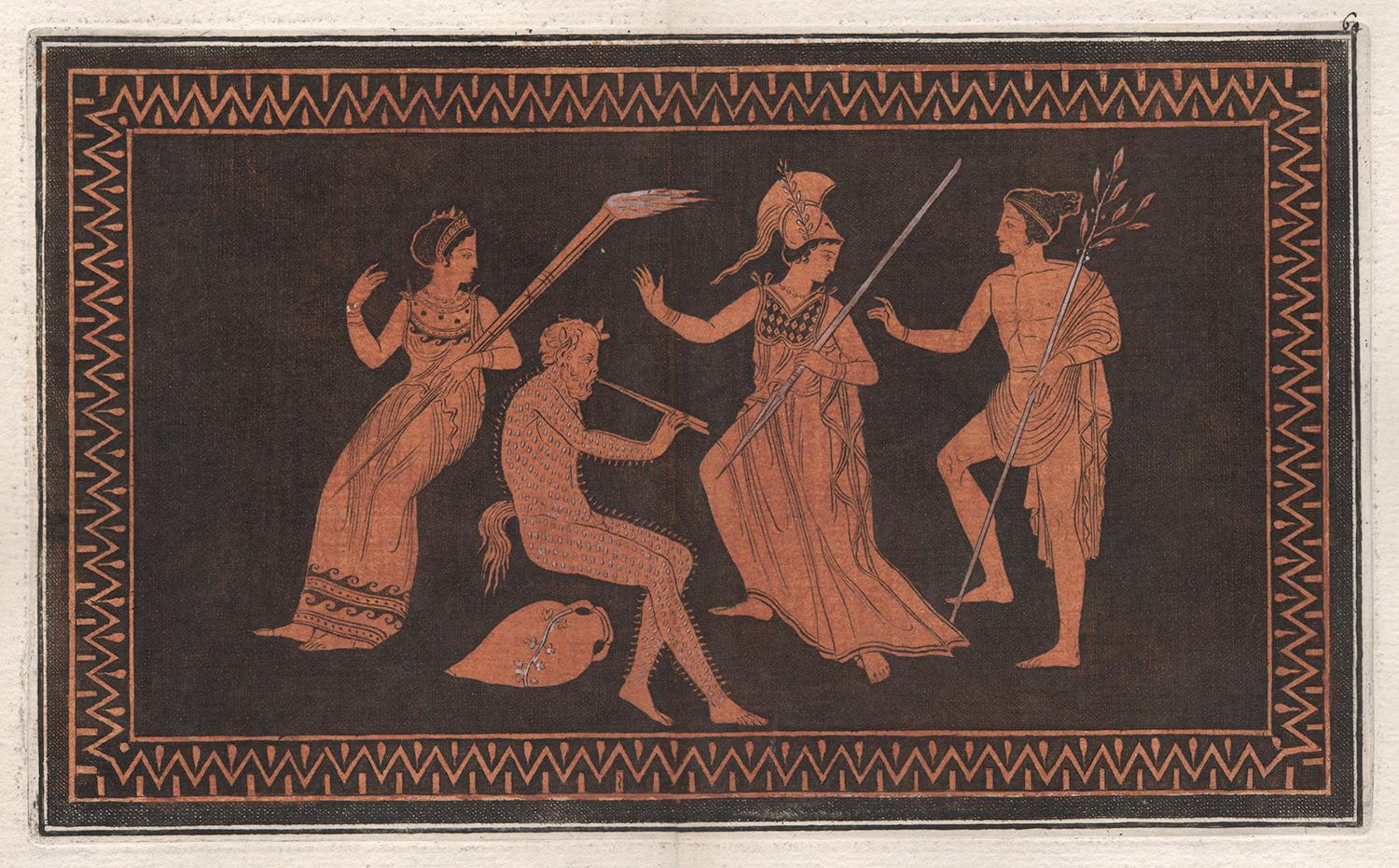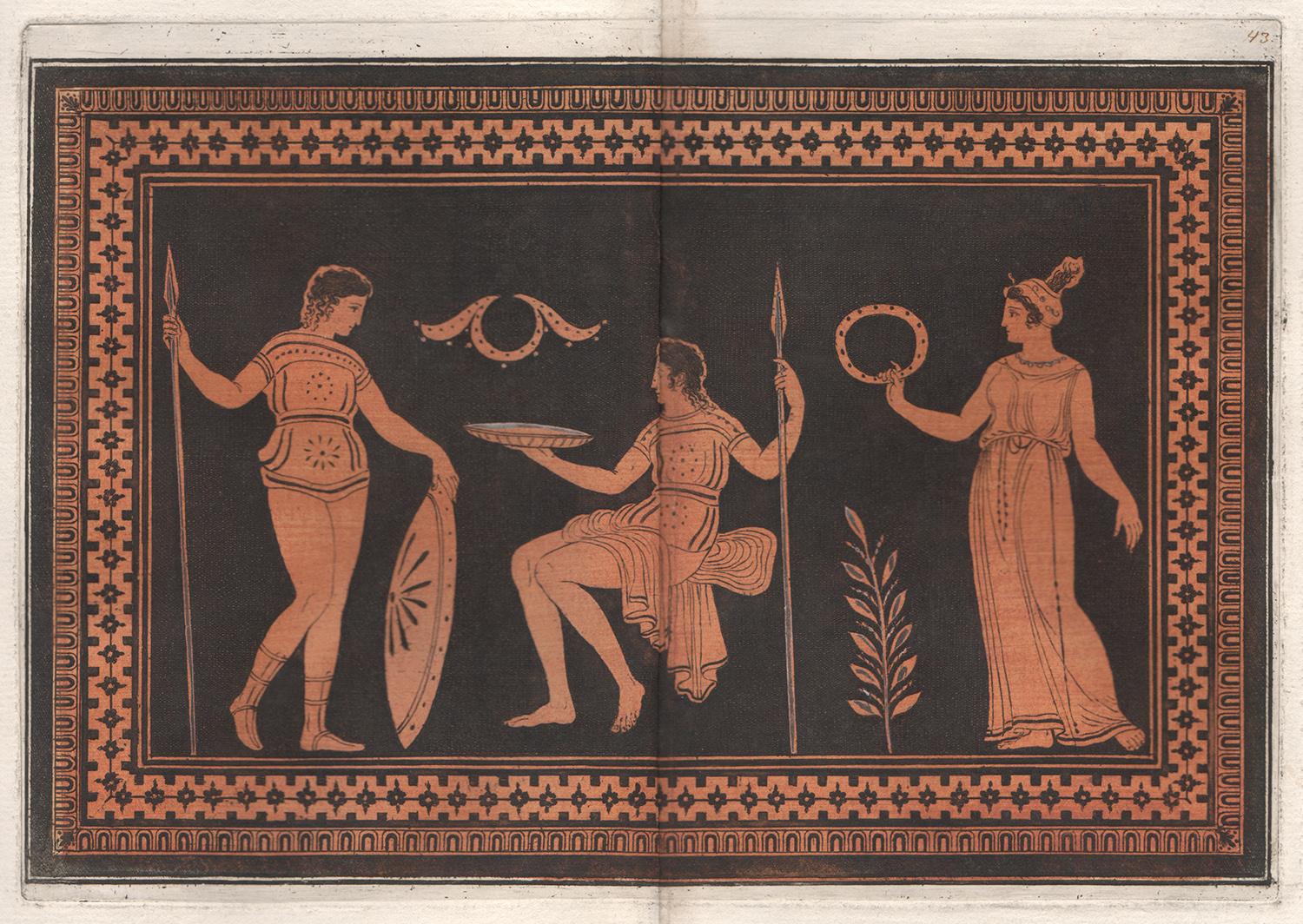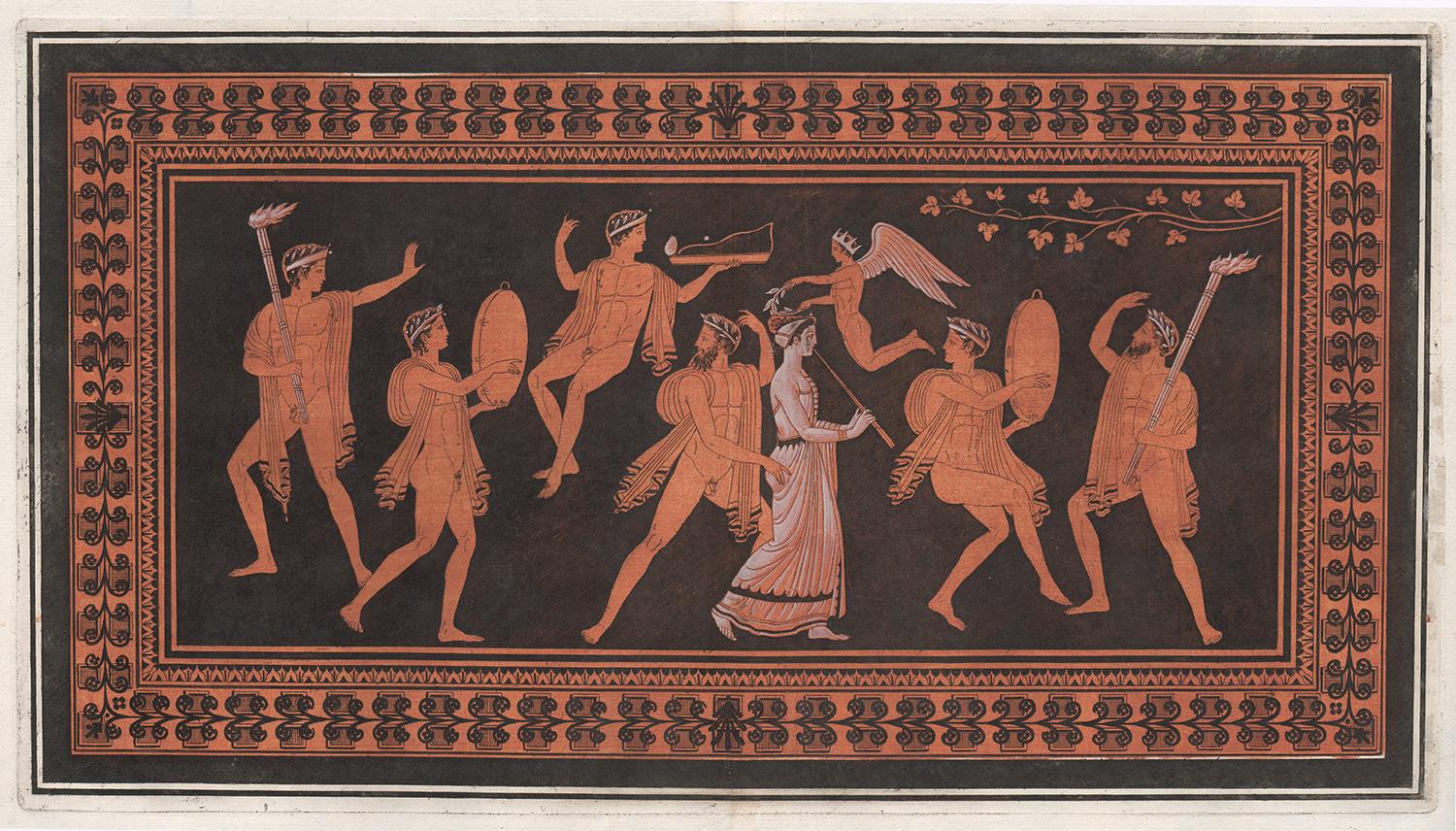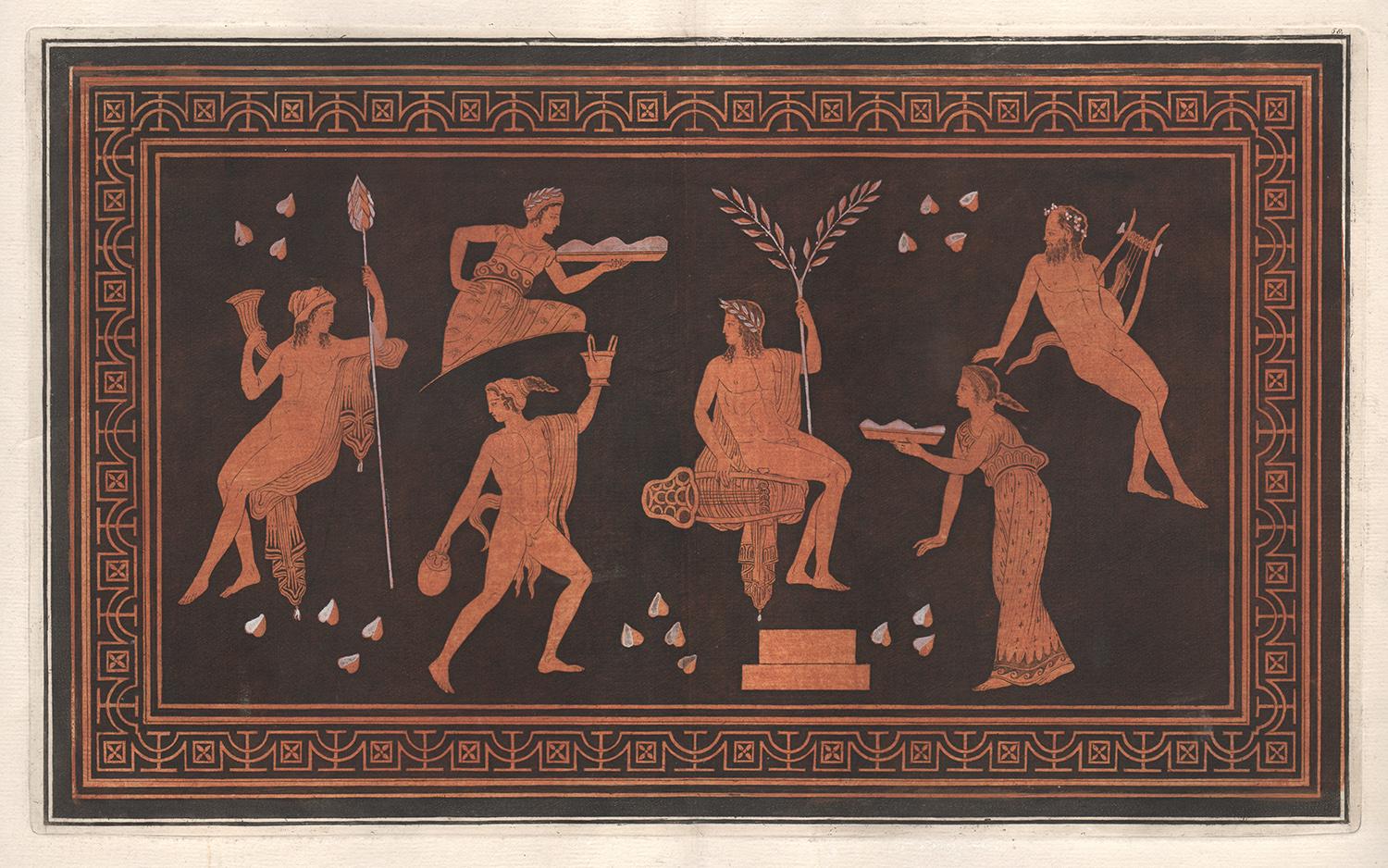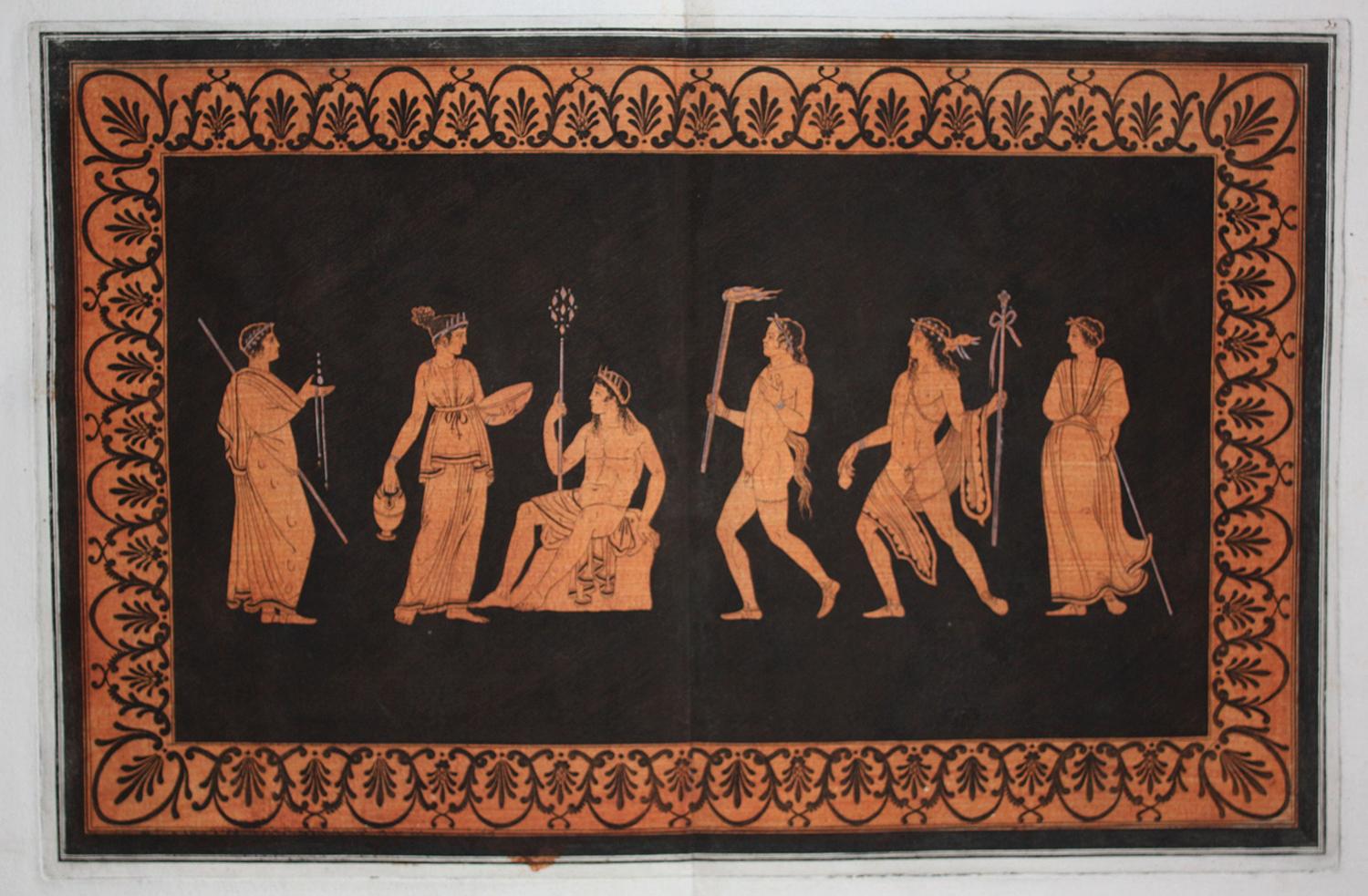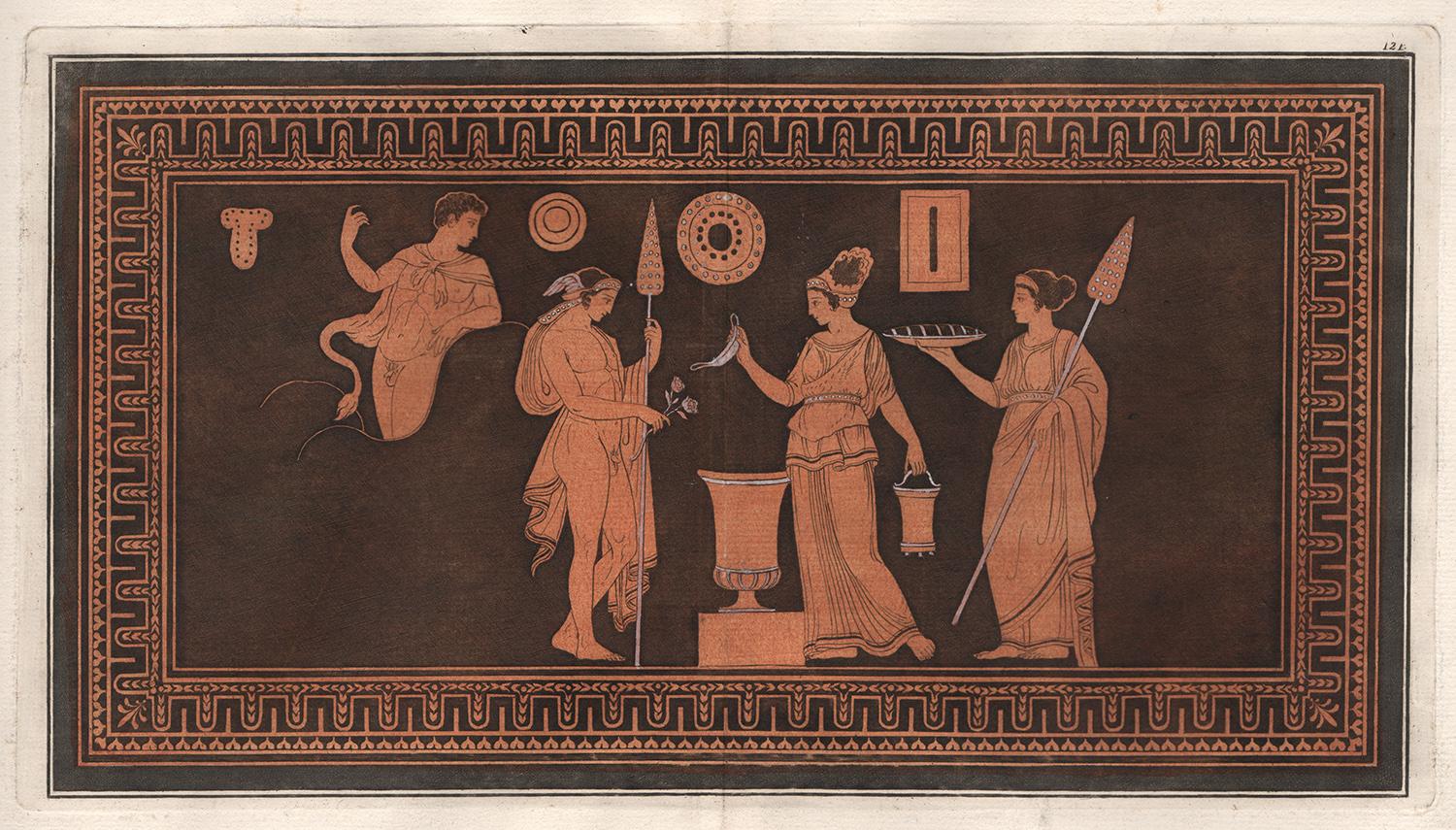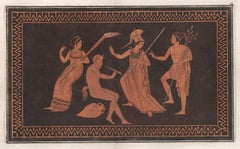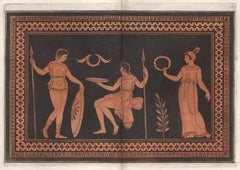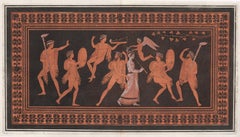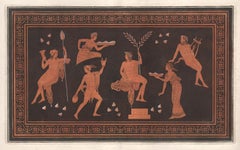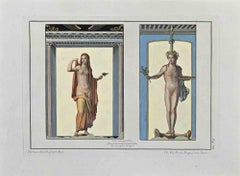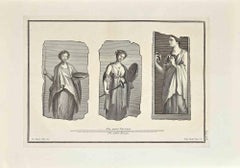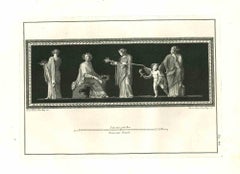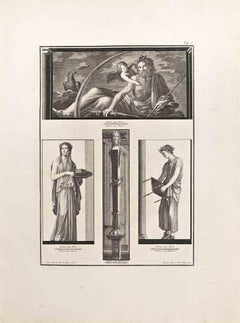Items Similar to William Hamilton Classical Greek Vase-Painting Engraving
Want more images or videos?
Request additional images or videos from the seller
1 of 3
Pierre Francois Hugues D'Hancarville (author)William Hamilton Classical Greek Vase-Painting Engraving1801
1801
$2,400
£1,792.69
€2,078.33
CA$3,332.34
A$3,735.12
CHF 1,944.77
MX$45,607.46
NOK 24,691.51
SEK 23,405.33
DKK 15,506.61
Shipping
Retrieving quote...The 1stDibs Promise:
Authenticity Guarantee,
Money-Back Guarantee,
24-Hour Cancellation
About the Item
Subject : Ancient Greek vase-painting depicting Paris seated, turns toward Helen, who leans on a pillar. Left : Pan and hind. Right : satyr. Above : Aphrodite and Eros.
Technique : Copper-line engraving with original hand-colouring
Background information : From the scarce Florence edition of Pierre Francois Hugues D'Hancarville's famous work on Sir William Hamilton's collection of antique vases - Antiquites Etrusques, Grecques et Romaines, tirees du Cabinet de M. William Hamilton. . It was first published in 1767, this edition is 1801. Sir William Hamilton (1730-1803) was the British ambassador to the Court of the Two Sicilys. Living in Naples, he was in a perfect position to acquire the Greek, Roman, and Etruscan vases being unearthed around Naples. He was quick to understand the importance of the vases to the study of ancient art and history. His first collection of vases was sold to the British Museum in 1772 Very few sets were produced due to the expense of printing and colouring this sumptuous work.
Condition : Top right has original ink number inscription. Central vertical fold as issued.
Sizes : 210mm by 300mm (platemark) 460mm by 710mm (sheet)
- Creator:
- Creation Year:1801
- Dimensions:Height: 8.27 in (21 cm)Width: 11.82 in (30 cm)
- Medium:
- Period:
- Condition:Central vertical fold as issued.
- Gallery Location:Melbourne, AU
- Reference Number:Seller: CL34451stDibs: LU124426304632
About the Seller
5.0
Platinum Seller
Premium sellers with a 4.7+ rating and 24-hour response times
Established in 2005
1stDibs seller since 2019
583 sales on 1stDibs
Typical response time: 1 hour
- ShippingRetrieving quote...Shipping from: Melbourne, Australia
- Return Policy
Authenticity Guarantee
In the unlikely event there’s an issue with an item’s authenticity, contact us within 1 year for a full refund. DetailsMoney-Back Guarantee
If your item is not as described, is damaged in transit, or does not arrive, contact us within 7 days for a full refund. Details24-Hour Cancellation
You have a 24-hour grace period in which to reconsider your purchase, with no questions asked.Vetted Professional Sellers
Our world-class sellers must adhere to strict standards for service and quality, maintaining the integrity of our listings.Price-Match Guarantee
If you find that a seller listed the same item for a lower price elsewhere, we’ll match it.Trusted Global Delivery
Our best-in-class carrier network provides specialized shipping options worldwide, including custom delivery.More From This Seller
View AllWilliam Hamilton Classical Greek Vase-Painting Engraving
By Pierre Francois Hugues D'Hancarville (author)
Located in Melbourne, Victoria
Subject : Ancient Greek vase-painting depicting the contest between Apollo (laurel-crowned) and Marsyas (with flute) witnessed by Artemis and Athena.
Technique : Copper-line engrav...
Category
Early 1800s Other Art Style Figurative Prints
Materials
Engraving
William Hamilton Classical Greek Vase-Painting Engraving
By Pierre Francois Hugues D'Hancarville (author)
Located in Melbourne, Victoria
Subject : Ancient Greek vase-painting depicting a warrior, seated young man, and young woman.
Technique : Copper-line engraving with original hand-colouring
Background informatio...
Category
Early 1800s Other Art Style Figurative Prints
Materials
Engraving
William Hamilton Classical Greek Vase-Painting Engraving
By Pierre Francois Hugues D'Hancarville (author)
Located in Melbourne, Victoria
Subject : Ancient Greek vase-painting depicting Dionysiac Group with satyrs and maenad from an Attic Attic bell-krater.
Technique : Copper-line engraving with original hand-colourin...
Category
Early 1800s Other Art Style Figurative Prints
Materials
Engraving
William Hamilton Classical Greek Vase-Painting Engraving
By Pierre Francois Hugues D'Hancarville (author)
Located in Melbourne, Victoria
Subject : Ancient Greek vase-painting depicting Dionysius with drinking horn and thyrsus, Apollo with lyre and laurel-branch, seated opposite each other with satyrs and maenads.
Te...
Category
Early 1800s Other Art Style Figurative Prints
Materials
Engraving
William Hamilton Classical Greek Vase-Painting Engraving
By Pierre Francois Hugues D'Hancarville (author)
Located in Melbourne, Victoria
Subject : Ancient Greek vase-painting depicting dionysiac groups.
Technique : Copper-line engraving with original hand-colouring
Background information : From the scarce Florence...
Category
Early 1800s Other Art Style Figurative Prints
Materials
Engraving
William Hamilton Classical Greek Vase-Painting Engraving
By Pierre Francois Hugues D'Hancarville (author)
Located in Melbourne, Victoria
Subject : Ancient Greek vase-painting depicting young nude man with thyrsus and flowers, opposite two young women with fillet, situla, phiale and thyrsus. Above left, Hercules in Nem...
Category
Early 1800s Other Art Style Figurative Prints
Materials
Engraving
You May Also Like
Ancient Roman Frescoes - Etching Vanni Delin - 18th Century
Located in Roma, IT
Ancient Roman Frescoes is an etching on paper hand watercolored, realized by Niccolò Vanni the 18th Century.
Signed on the plate.
Good conditions
The etching belongs to the p...
Category
Late 18th Century Old Masters Figurative Prints
Materials
Etching
Ancient Roman Frescos - Etching by Giovanni Morghen - 18th Century
Located in Roma, IT
Ancient Roman Frescos from the series "Antiquities of Herculaneum", is an original etching on paper realized by Giovanni Morghen in the 18th Century.
Signed on the plate.
Good con...
Category
Late 18th Century Old Masters Figurative Prints
Materials
Etching
Ancient Roman painting - Original Etching by Philip Morghen - 18th Century
By Philip Morghen
Located in Roma, IT
Ancient Roman painting - The reverence scene from the series "Antiquities of Herculaneum", is an original etching on paper realized by Philippus...
Category
18th Century Modern Animal Prints
Materials
Etching
Ancient Roman Frescoes - Etching by Niccolò Vanni - 18th Century
Located in Roma, IT
Ancient Roman Frescoes of Herculaneum from the series "Antiquities of Herculaneum", is an etching on paper realized by Nicola Vanni in the 18th Century.
Signed on the plate.
Goo...
Category
Late 18th Century Old Masters Figurative Prints
Materials
Etching
Ancient Roman Painting - Etching by R. Pozzi, N. Vanni - 18th Century
Located in Roma, IT
Ancient Roman painting - The reverence scene with the angel from the series "Antiquities of Herculaneum", is an original etching on paper realized by Roccus Pozzi and Nicol Vanni in ...
Category
18th Century Modern Animal Prints
Materials
Etching
Ancient Roman Fresco - Etching by Giovanni Morghen - 18th Century
Located in Roma, IT
Ancient Roman Fresco from the series "Antiquities of Herculaneum", is an etching on paper realized by Giovanni Morghen in the 18th Century.
Signed on the plate.
Good conditions w...
Category
Late 18th Century Old Masters Figurative Prints
Materials
Etching
More Ways To Browse
Antique Greek Vases
Engravings 1800
Engraving Greek
Engravings Greece
Etruscan Vase
Antique Greek Vase Prints
Greek Etruscan Vases
Greek Vase Engraving
Hamilton Greek Prints
Prints By Sir William Hamilton
Satyr Pan
Antique Hamilton Cabinet
Abraham And Straus
Alex Katz Dancer 2
Andy Warhol T Shirts Vintage
Andy Warhol Ticket
Barbara Sandler
Camille Silver Tea Set
